Deciding to learn a new programming language is easy, but finding the best courses and related books to that programming language could be hectic. There are many courses and books for each programming language on the internet. Although for most of those you have to pay, many of them are free too.
Best Programming Books
Here in this article, we have mentioned some of the most recommended books for many high-level programming languages . Here, we have divided the books related to their corresponding programming language. Though there are many books on the internet that covers the basics of high-level programming languages, here, our main goal is to suggest to you the best programming books for a particular programming language you have chosen.
If you are completely new to the world of programming and have no basic knowledge of how to code and how code works, you may require a supplementary book apart from the specific programming language books. The supplementary books will help you understand each concept's basic functionalities and how they are supposed to work.
The supplementary book is completely optional if you already have some knowledge of coding and its functionality, but for a complete beginner, this book is highly recommended. With that said, let's move on to the best programming books, starting with Structure and Interpretation of Computer Programs.
1. Structure and Interpretation of Computer Programs (Second Edition)
Author: Harold Abelson and Gerald Jay Sussman
The Structure and Interpretation of Computer Programs book are well-known as SICP. This programming book has had a great impact on the computer science curricula over the past decades. It contains the fundamentals of programming. The authors have mentioned new implementations of most of the programming systems, such as compiler and interpreter , in the second edition of the programming book.
Moreover, this book introduces how different approaches, such as concurrent programming, functional programming, lazy evaluation, and nondeterministic programming, deal with time in computational models.
It is replete with examples on various programming topics to help you better understand how programs work. SICP is ideal for computer science students because the world's best engineering institute, MIT, includes this book in their programming courses. You need to learn how to use this book alongside your specific programming language books.
MIT also has a YouTube channel on which they have covered many topics related to programming. There, you can find video lectures that cover the topics of this book if you are finding this book a little difficult to understand.
About the Author
Hal Abelson was the Computer Science and Engineering professor of the class of 1992 at the Massachusetts Institute of Technology. Also, he is the director of Creative Commons, Public Knowledge, and the Free Software Foundation and a fellow of IEEE. Gerald Jay Sussman is a Panasonic Professor of Electrical Engineering at MIT.
Publisher:
The MIT Press
Paperback Pages:
657 pages
You can buy this book from here .
2. Python Crash Course
Author: Eric Matthes
Python Crash Course by Eric Matthes is a highly recommended programming book for every beginner. Why is this book so popular among beginners? Because of its project-based topics, this programming book contains many projects that help you to build your Python programming skills. With Python Crash Course, you will learn how to:
- Leverage Python tools and libraries, such as Matplotlib, Django , Pygame, and Plotly.
- Use data to create appealing visualizations.
- Handle errors.
- Develop 2D games that respond to mouse clicks and keypresses.
- Create web apps.
Unlike other lengthy programming books, this book is very interesting. You won’t lose your interest in learning Python while reading this book. This Python book provides a thorough introduction to Python programming language . It aims to educate you on writing Python programs, solving problems, and resolving issues fast.
The first half of the book introduces you to the basic concepts of Python programming, such as variables, classes, loops, and lists. Additionally, it equips you with the skills to write clean Python code and test it safely. The second half of the book covers three projects:
- A Space Invaders -inspired arcade game.
- Sets of data visualizations with Python's handy libraries.
- A simple web app to deploy online.
About the Author
Eric Matthes is high school mathematics and science teacher. He lives in Alaska and teaches an introductory Python course to students. He started writing programs when he was 5.
Publisher:
No Starch Press
Paperback Pages:
544 pages
You can buy this book from here .
3. Learning Python
Author: Mark Lutz
Learning Python by Mark Lutz is just the opposite of the Python Crash Course by Eric Matthes. This hands-on book on Python provides detailed information about core topics. It assists you in writing clean and efficient code with Python. It is ideal for beginners in the world of programming or professionals proficient in other languages.
This book will help you start with Python 2.7 and 3.3. It includes multiple quizzes, exercises, and illustrations to help you gain clarity on various topics of Python programming. Learning Python will help you understand:
- Python's built-in object types, such as numbers, dictionaries, and lists.
- Learn Python's general syntax.
- Create objects with Python statements.
- Write functions in Python to avoid code redundancy.
- Python classes and objects.
- Exception handling in Python .
- Python decorators, descriptors, metaclasses, and Unicode processing.
About the Author
Mark Lutz is a well-known Python trainer and the author of three popular Python books, namely Learning Python, Programming Python, and Python Pocket Reference.
Publisher:
O'Reilly
Paperback Pages:
1,600 pages
You can buy this book from here .
4. Fluent Python
Author: Luciano Ramalho
Fluent Python by Luciano Ramalho is an ideal guide for Python intermediate and advanced learners. Once you are done with the above two beginner-level Python books - Learning Python and Python Crash Course - you can choose this programming book to hone your Python expertise and learn some new advanced Python topics.
The author, Luciano Ramalho, walks you through the core features and libraries of the Python programming language. Also, he teaches you how to write shorter, more efficient, and more readable code while being faster.
This book covers the following Python topics:
- Python Data Model
- Data Structures
- Functions as Objects
- Control Flow
- Object-Oriented Idioms
- Meta-Programming
With this hands-on Python guide, you will be able to write clean and idiomatic Python code.
About the Author
Luciano Ramalho is a web developer. Previously, he also worked on Perl and Java programming languages. Moreover, he worked on Brazil's largest news portals using Python and taught Python in media, banking, and government domains in Brazil.
Publisher:
Shroff/O'Reilly
Paperback Pages:
766 pages
You can buy this book from here .
5. Core Java Vol I-Fundamentals
Author: Cay S. Horstmann
Core Java by Cay S. Horstmann is an ideal book for Java beginners. This book is an ideal guide for Java programmers that help them write efficient and maintainable Java code. If you are working with Java9, 10, or 11, then this book provides hundreds of realistic examples that work on these platforms and help you understand the better way of writing code.
Through this Java programming book, the author has made it easier for learners to understand how to use JShell's read-eval-print Loop (REPL) for rapid development. It also covers all the fundamental concepts of Java and UI programming, such as generics, lambda expressions, objects, concurrency, Swing design, and functional programming.
This book helps you to:
- Create effective Java programs through exception handling and debugging.
- Write reusable code using generic programming.
- Leverage Java's standard collections to improve the performance of Java programs.
- Utilize multi-core processors with Java's concurrency.
About the Author
Cay S. Horstmann is a computer science professor at San Jose State University. Also, he is a Java Champion and has written a number of Java books for computer science students and professional programmers.
Publisher:
Pearson
Paperback Pages:
928 pages
You can buy this book from here .
6. Core Java Vol II-Advanced Features
Author: Cay S. Horstmann
Once you are done with Core Java Vol I, you can buy Core Java Vol II for learning advanced Java. Core Java Volume II introduces readers to advanced UI programming. Also, you will get to know about the features of the Java SE 9 platform.
The Java programming book covers thoroughly tested examples through which you can learn to build real-world Java applications. All these code examples serve to be the starting point for you to develop applications with Java. Therefore, if you want to learn how to create robust applications and real-world software using Java, then this book is for you.
About the Author
Cay S. Horstmann is a Java Champion and a Computer Science professor at San Jose State University.
Publisher:
Pearson
Paperback Pages:
1,040 pages
You can buy this book from here .
7. Effective Java (Third Edition)
Author: Joshua Bloch
In the third edition of Effective Java, Bloch has covered new design patterns and language idioms of Java that have been introduced since the publishing of the second edition. It covers topics such as lambda expressions, streams, and generics and collections. Moreover, the author has introduced readers to the selected features of Java 9 .
Through this Java programming book, you will get introduced to:
- Updated programming techniques and best practices on generic topics, such as libraries, objects, methods, classes, and serialization.
- Java's most fundamental libraries, such as java.io, java.util, and java.lang.
- Approaches to avoid pitfalls of the commonly misunderstood subtleties of the Java programming language.
About the Author
Joshua Bloch was a former Chief Java Architect at Google and a Senior Systems Designer at Transarc. Presently, he is a professor at Carnegie Mellon University. He holds Ph.D. and B.S. in Computer Science.
Publisher:
Addison-Wesley Professional
Paperback Pages:
416 pages You can buy this book from
here
.
8. C++ Primer (Fifth Edition)
Author: Stanley B. Lippman, Josée Lajoie, and Barbara E. Moo
The fifth edition of C++ Primer covers all the features and topics of the C++ 11 standard. This C++ programming book is a definitive guide for readers wishing to learn C++ faster and use it highly effectively. The authors have explored the best programming practices and an effective way to use the C++ language and its libraries to write efficient C++ code through this book.
This C++ programming book is a perfect guide for beginners to the C++ language since it provides a thorough discussion of the core concepts and features of C++. It is also the best guide for professionals because it covers a wide variety of coding examples that help to write better and more readable C++ code.
About the Author
Josée Lajoie was a member of the C/C++ compiler's core development team at IBM. Presently, she is working at Pixar. Also, she was the head of the core language working group for the ANSI/ISO C++ standardization committee.
Barbara E. Moo has around 30 years of experience in the software development industry. She worked at AT&T, worked with Bjarne Stroustrup, the inventor of C++, and managed the C++ development team.
Stanley B. Lippman is an author and a computer scientist. He also worked with the inventor of C++, Bjarne Stroustrup, in the early stages of C++ development.
Publisher:
Addison-Wesley
Paperback Pages:
976 pages
You can buy this book from here .
9. The Go Programming Language (Addison-Wesley Professional Computing Series)
Author: Brian W. Kernighan and Alan A. A. Donovan
Go Programming Language (Addison-Wesley Professional Computing Series) by Brian W. Kernighan covers all the basics of Go programming. Reading this book does not require any prior experience with Go or any other programming language. This book provides you with hundreds of interesting examples. It provides code snippets for each topic that has been discussed.
The first chapter of this programming book covers all the fundamentals of Go, along with the programs for file I/O, text processing, web clients and servers, and graphics.The next few chapters explore the structural elements of the Go programs, such as syntax, files, functions, control flow, and data types. In addition, you will get to know how to build, test, and maintain projects using the Go tool.
Moreover, this book introduces you to advanced topics of Go, such as goroutines and channels, communicating sequential processes, and concurrency with shared variables. The last two chapters of this programming book walk you through the low-level features of Go, metaprogramming using reflection, using unsafe packages, and using cgo tools to create Go bindings for C libraries.
About the Author
Alan A. A. Donovan is a member of the Go team at Google in New York. He holds a computer science degree and has worked on infrastructure projects at Google.
Brian W. Kernighan is a professor in the Computer Science Department at Princeton University. In addition, he was a technical staff member in the Computing Science Research Center at Bell Labs.
Publisher:
Addison-Wesley
Paperback Pages:
400 pages
You can buy this book from here .
10. Code Complete (Developer Best Practices) 2nd Edition
Author: Steve McConnell Code
Complete is the best practical guide to programming. It is helping many developers to write more readable and clean code. This book is highly recommended for those students who are in their final year of graduation in computer science.
This programming book covers all the basic problems you can face when you create and develop industry-level software. Through this book, you can discover effective and timeless programming strategies that aid you to:
- Write code with maximum efficiency.
- Debug errors quickly and efficiently.
- Build quality applications.
- Identify and resolve construction issues at the early stages of software development.
- Apply defensive programming techniques to avoid errors.
Once you go through this book, you will have a basic understanding of how to create high-quality software. With this book, you will discover many new techniques and strategies to design software with minimum complexity and maximum creativity.
About the Author
Steve McConnell is one of the greatest and most well-known personalities in the field of software development. He is the Chief Software Engineer of Construx Software. Also, he was the Lead Developer of Construx Estimate and SPC Estimate Professional.
Publisher:
Microsoft Press US
Paperback Pages:
960 pages
You can buy this book from here .
11. The Pragmatic Programmer: From Journeyman to Master
Author: Andrew Hunt and Thomas Dave
This programming book provides you with a direct approach to how to write effective code and what architecture you should follow to build effective software. With this book, you can dig deep into the world of programming and software development. The Pragmatic Programmer covers various topics, ranging from personal responsibility and career development to architectural techniques to develop flexible and reusable code.
Through this book, you will learn how to:
- Avoid duplicating knowledge.
- Fight software rot.
- Develop flexible, reusable, and adaptable code.
- Avoid programming by coincidence.
- Make your code bullet-proof with exceptions, assertions, and contracts.
- Build a team of pragmatic developers.
- Make the development process quick and easy through automation.
This programming book mostly focuses on the automation of software so the software can be developed more precisely with less error.
About the Author
Andrew Hunt, also known as Andy Hunt, is a writer of many books on software development. He was one of the 17 original authors of the Agile Manifesto . Along with Dave Thomas, he founded the Pragmatic Bookshelf, a series of books on software development.
Dave Thomas is a computer programmer, author, and editor. Along with Andy Hunt, he has also written about the Ruby language. Moreover, he introduced two phrases - DRY (Don't Repeat Yourself) and Code Kata - to the programming world.
Publisher:
Addison-Wesley Professional
Paperback Pages:
443 pages
You can buy this book from here .
12. Clean Code: A Handbook of Agile Software Craftsmanship
Author: Robert C. Martin
You can judge this book by its title. Clean Code is all about the good and bad practices of coding. The tag line of this book itself says that bad code can also work, but if code isn’t clean, it can bring an organization to its knees. This programming book consists of three parts.
The first part introduces you to principles, patterns, and best practices for writing clean code. The second part talks about several case studies that can increase complexities in your code. Lastly, the third part is the payoff. It consists of heuristics and 'smells' gathered while creating case studies. After reading this book, you will gain enough clarity on how to:
- Differentiate between the good and bad code.
- Transform bad code into good code.
- Write good and clean code.
- Create good functions, good classes, good names, and good objects.
- Format code for maximum readability.
- Handle errors in code.
- Practice test-driven development.
When you write industry-standard code, it has to go through many testing phases before deployment. It is always better to write good code so that it has fewer errors or bugs.
About the Author
Robert C. Martin is a software developer and an international software consultant. Moreover, he is the founder and president of Object Mentor, Inc. It is a team of skilled and experienced consultants who guide clients across the world on C#, Ruby, object-oriented programming, C++, Java, UML, design patterns, and Agile methodologies.
Publisher:
Pearson
Paperback Pages:
1,207 pages
You can buy this book from here .
13. Introduction to Algorithms (Third Edition)
Author: Thomas H. Cormen, Charles E. Leiserson, R Rivest, and C Stein
Many prestigious engineering institutes include this book in their courses. This programming book covers all the basic algorithms and data structures. Apart from the basic algorithms, it also covers a broad range of other algorithms in-depth. It makes the design and analysis of algorithms easy to read for all levels of readers.
Moreover, the authors have presented algorithms in simple English and pseudocode. They are easy to understand by anyone who has little knowledge of programming. Also, the authors have explained algorithms in easy language, maintaining their depth of coverage or mathematical rigor.
The third edition includes two new chapters on van Emde Boas trees and multithreaded algorithms. It also has an appendix on matrices. Also, this edition features several new exercises and problems.
About the Author:
Thomas H. Cormen is a former director of the Institute for Writing and Rhetoric and a professor of Computer Science at Dartmouth College.
Charles E. Leiserson is a professor of Computer Science and Engineering at the Massachusetts Institute of Technology.
Ronald L. Rivest is a professor of Electrical Engineering and Computer Science at the Massachusetts Institute of Technology.
Clifford Stein is a professor of Industrial Engineering and Operations Research at Columbia University.
Publisher:
MIT Press
Paperback Pages:
1,312 pages
You can buy this book from here .
14. Data Structure and Algorithms in Java (Second Edition)
Author: Robert Lafore
This book covers all the data structures and algorithms which are specific to the Java Programming language. Though the topic itself is complicated, this programming book explains it in an easy-to-understand manner.
Moreover, the author has included a myriad of examples. He also has a workshop as a small demonstration program executable on a web browser. The author has penned down pseudocode for different algorithms. So, if a non-Java developer wants to read this book for data structures and algorithms, this book is good to go.
About the Author
Robert Lafore is a best-selling writer and has written many books on programming. Formerly, he worked as a Systems Analyst for the Lawrence Berkeley Laboratory. He holds degrees in Mathematics and Electrical Engineering. In addition, he is the founder of a software company.
Publisher:
Sams Publishing
Paperback Pages:
800 pages
You can buy this book from here .
Conclusion
Finally, we've reached the end of the list of top programming books that every beginner and professional should know. It is always good to start learning programming through books since they provide you with knowledge of a particular language from scratch. Moreover, they serve as excellent references. Our list consists of top books to learn popular programming languages, such as Java, Python, and C++.
Also, it includes books to learn data structures and algorithms and understand the structure and interpretation of computer programs. We hope this article has helped you find the best book to learn to program. If you know other best books for programming, feel free to share them in the comments section below.
People are also reading:
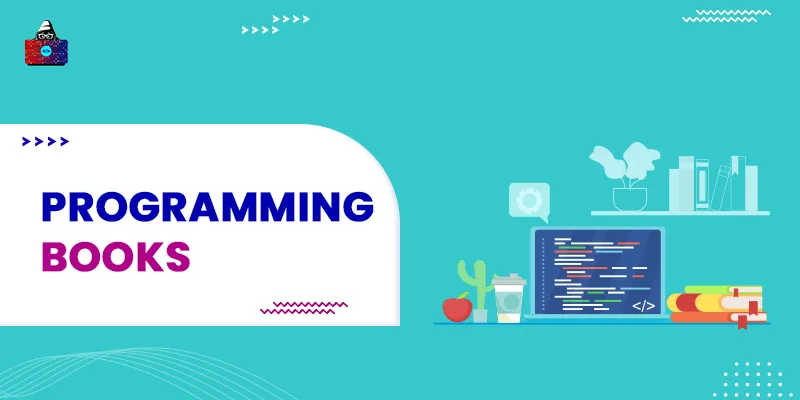


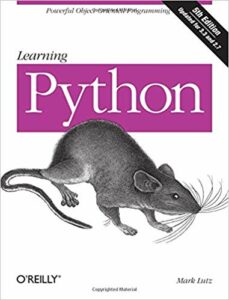

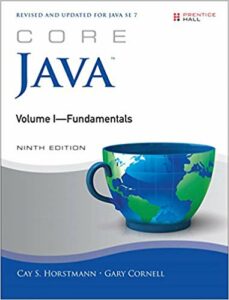
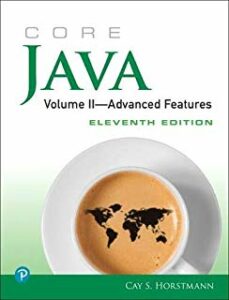
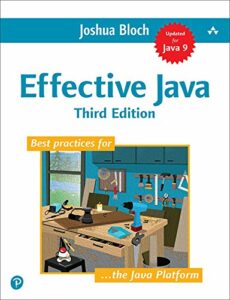
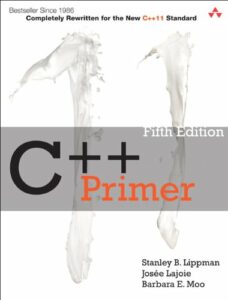
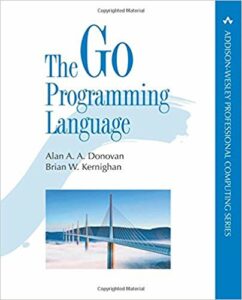
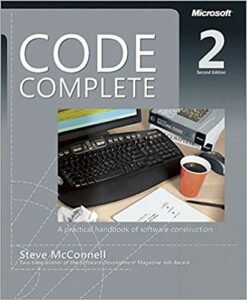
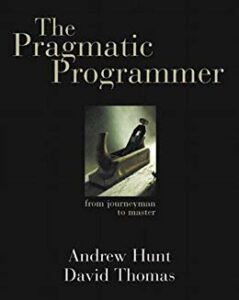
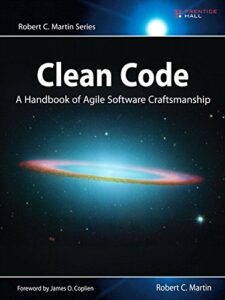
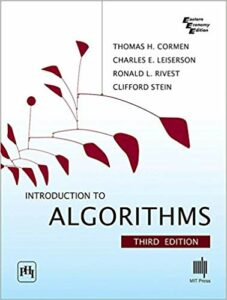
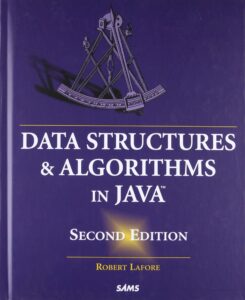



Leave a Comment on this Post